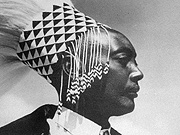Remembering King Rudahigwa Mutara III, 49 years on
Last Sunday the people of Nyanza district marked the 49th anniversary of the death of King Rudahigwa Mutara III of Rwanda.

King Rudahigwa Mutara III
